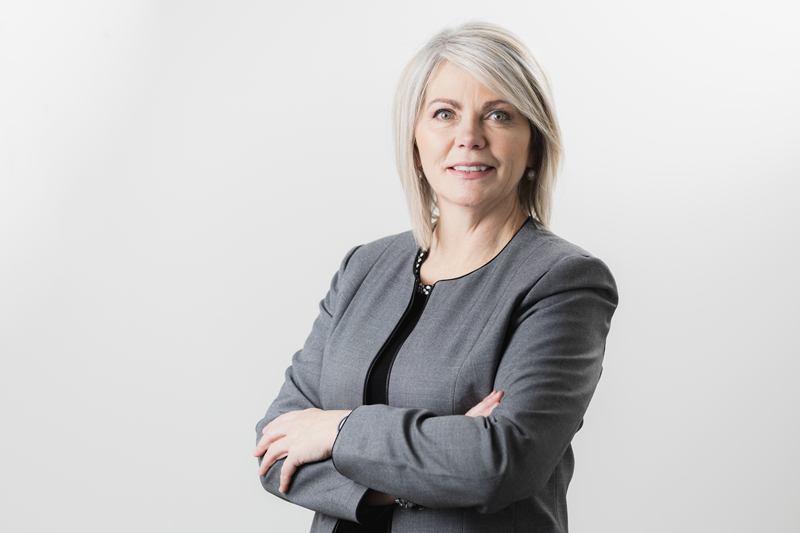Account Login
Don't have an account? Create One

Record low unemployment combined with changes to the labour market means competition for top talent is fierce. Often, that talent has greater expectations when it comes to flexible workplace policies. “We’re noticing, on the recruitment side, that more people want to work from home,” said Jacqui Winter, president of HR Project Partners. And, she says, in recent years she has been seeing more businesses offer remote work opportunities for hard-to-fill roles.
As organizations refine their operating models after the initial crisis of the pandemic, each must decide how to structure their working models so they can continue to remain successful while also deciding how far they can go to meet this desire for flexibility.
A shifting labour market
After the sudden adjustment to working from home that followed the initial lockdown in 2020, many people realized they prefer it to daily office life. And they aren’t eager to relinquish the flexibilities gained.
This can be especially true for women who often balance an invisible workload on top of their 9-5. “Women know exactly what they can do in that extra 30 minutes they save from not commuting,” said Eleanor Beaton, founder of Safi Media. Having extra time with their families or time to prioritize their own wellbeing, has been a game changer for some. Working remotely has even allowed some employees to be closer to their extended families, providing them with a support network they previously couldn’t access.
“Women know exactly what they can do in that extra 30 minutes they save from not commuting.”
—Eleanor Beaton, founder of Safi Media
A surge in interprovincial migration has, in many ways, been helpful to Atlantic Canadian companies, giving them access to a pool of talent that may previously have been challenging to find. According to Eleanor, this has come with the added benefit that as folks from outside the region join an organization, they provide training and mentorship for employees.
For organizations that were set up to work in a remote or hybrid environment pre-pandemic, adapting to the new reality has been easier than for those who scrambled to institute a patchwork of approaches to keep their business running. If those businesses now want to successfully make a permanent switch to hybrid or remote work environments, a solid look at business practices, policies, and people management is essential.

Remote by design at Safi Media
When Eleanor Beaton started Safi Media in 2014, she chose to build her coaching for women entrepreneurs business as a virtual workplace. This allows her access to talent across Canada, and also helps Safi Media readily access business in a broader marketplace.
She believes that, with more companies looking for solutions provided virtually, going remote or hybrid offers a big access opportunity for entrepreneurs in Atlantic Canada. “Being in downtown Toronto is no longer an advantage over a company working out of any community in Atlantic Canada.” This access to new markets, and new talent, has been beneficial to small business owners (although the flip side is that there is also increased competition for opportunities).
“Being in downtown Toronto is no longer an advantage over a company working out of any community in Atlantic Canada.”
—Eleanor Beaton, founder of Safi Media
Through her work with women entrepreneurs, and from her own experiences as a business owner, Eleanor identified some of the biggest challenges to going hybrid and remote as: productivity, collaboration, and wellbeing. But all can be overcome with intentional leadership.
At Safi Media, the team uses scrum methodology, traditionally a software workflow process, to run all of their projects. They’ve found scrum to be really effective to manage workflow and productivity.
Structured collaboration has also been key to their success. Virtual co-working sessions are used for those times when the team needs to come together to get things done. It really comes down to “being more mindful about creating the container inside which work happens,” said Eleanor.
This includes an end of day check-in to touch base with employees and ask questions, like what challenged you, what worked really well today, and what are you working on that isn’t complete. Basically, she said, “every day there’s a simple, straightforward opportunity and space for employees to share and express themselves.”
Work-life balance is integral to how Safi Media operates. They don’t accept back-to-back meetings as a normal part of the day. And everyone has the ability to set up their working day in a way that works for them while also accomplishing what they need to accomplish.
Because employees are spread out from east to west across Canada, they’ve set a core meeting time (9-1 Atlantic). These core meeting hours enable that structured collaboration time while also protecting time for people to work asynchronously and to set boundaries around their working hours.
Having intentional and clear structures is Safi Media makes remote work make sense for their business.

Hybrid for health and safety
After the rapid shift to remote work in 2020, the Worker’s Compensation Board of Nova Scotia (WCBNS) made a deliberate long-term shift to a hybrid environment in April 2022. Through the real time experience they gained during the first two years of the pandemic, they saw that employees were able to do their work remotely and do it well.
As a result, employees at WCBNS report feeling healthier and less stressed. And employees who prefer to be in the office still have that option. Importantly, service and customer satisfaction measures have remained consistent as the business has transitioned to a hybrid model.
Shelley Rowan, vice president of people and strategy, stresses that for businesses looking to make the switch to hybrid longer term, it’s key to think through: what is the work and how can you enable an employee to have flexibility while still providing great service?
For organizations going hybrid, it’s important to reimagine what it will look like when you do bring people into the office. She encourages asking, “what is the value of coming together?” Be purposeful about the culture and collaboration that happens in the new work environment; ensure that when people are together, that time is wisely spent.
While WCBNS doesn’t approve work from home plans for businesses, Shelley stresses the importance of health and safety in the home office. “For us, there’s no question: where you work is your workplace.” This is true whether an employee is travelling in their car to get to a client, in the office, on a job site, or working from home. It’s imperative to think about what’s required if people will be working from home regularly. This includes things like good ergonomics, proper office set up, first aid kit, and a fire extinguisher.
“For us, there’s no question: where you work is your workplace.”
—Shelley Rowan, vice president of people and strategy, Worker’s Compensation Board of Nova Scotia
At WCBNS, they’ve taken the familiar concept of the health and safety checklist that’s completed in the office and adapted it for home office use. Employees are responsible for self-inspection against the checklist at predetermined points in the year.
Thoughtful, experienced leaders who are openly share ideas and are willing to try new things has been integral to the successful adoption of a hybrid model at WCBNS.
Shelley recommends having early and open dialogue with employees about what you’re thinking and where you’re going. Listen to employees and what their experience is of working remotely. This can go a long way to designing a future workplace that sets everyone up for success.

Hybrid for market success
Based out of St. John’s, Newfoundland, HR Project Partners has been better positioned to grow their business by having employees across Atlantic Canada and Quebec.
This means that while Jacqui Winter, president, prefers the connection of in-office work, she maintains a hybrid work environment that not only allows her to access more markets, but allows her employees greater flexibility. For companies that can operate remotely, she says, “it opens their door to a talent pool outside of their geographic area”.
At HR Project Partners, managing well in a hybrid work environment comes down to trust, communication, regular check-ins, and the work getting done. The team has huddles multiple times a week to do a virtual check-in. They also focus on creating opportunities for connection—both work and social—including bringing employees into the office a few times a year for in-person team building.
For those considering a shift to a hybrid work model, Jacqui says it’s important to revisit and update workplace policies to ensure they are reflective of the reality employees are working in, as well as to think about how you will manage output and set expectations.
Setting clear expectations for employees’ roles, participation, and work delivery helps to build trust at HR Project Partners. Regular one-on-one check-ins with dedicated time to talk through issues is essential.
Jacqui recommends that managers who are dealing with productivity issues itemize the issues and have regular check-ins with the employee so they understand what they need to do differently.
When new employees join an organization, she encourages good onboarding practices. Assigning a coach or mentor allows employees to build a relationship and ask questions of someone other than the person they report to directly.
Most important of all, Jacqui emphasizes, is clear communication to successfully manage in any environment, whether hybrid, remote, or in-office.
What’s best for your company and your employees?
At the end of the day, it’s up to every business owner to ask themselves: what do we want for our organization?
And there are no easy answers. For some employees, the productivity and health benefits make the answer seem clear. But, Jacqui said, “not everybody is cut out to work from home. Not everyone can function and focus as well at home as in the office”. A successful model needs to be based on a combination of factors, including the industry, the type of role, and the individual.
At the same time, Shelley pointed out, this is “a chance to think about your work differently.” Engaging your employees and bringing them along in your office transformation journey can help you understand their needs, and, if it’s done well, set a tone for your business as a workplace of choice for both existing and potential talent.
As Eleanor said, “almost all change is hard but it also presents so many opportunities”.
Comment policy
Comments are moderated to ensure thoughtful and respectful conversations. First and last names will appear with each submission; anonymous comments and pseudonyms will not be permitted.
By submitting a comment, you accept that Atlantic Business Magazine has the right to reproduce and publish that comment in whole or in part, in any manner it chooses. Publication of a comment does not constitute endorsement of that comment. We reserve the right to close comments at any time.
Cancel